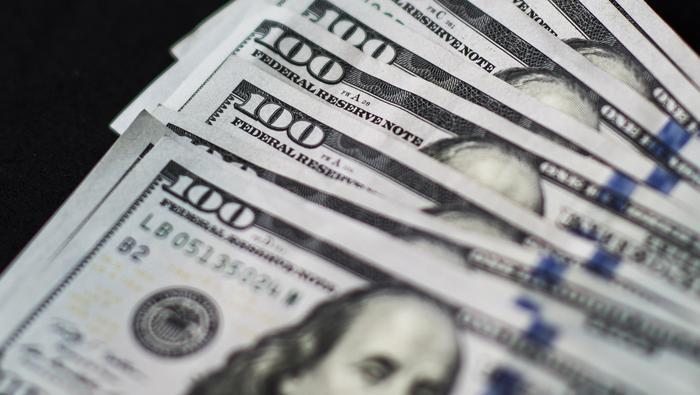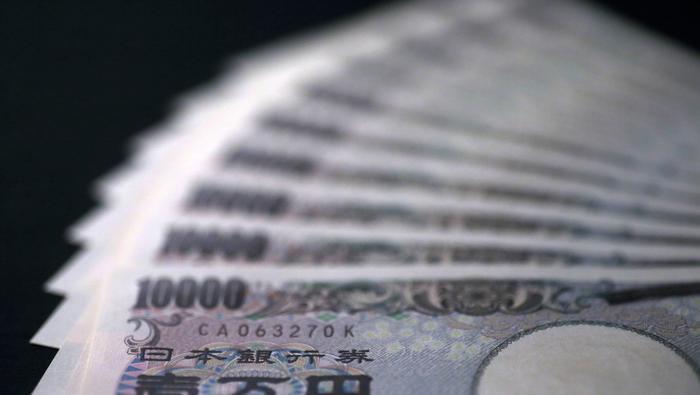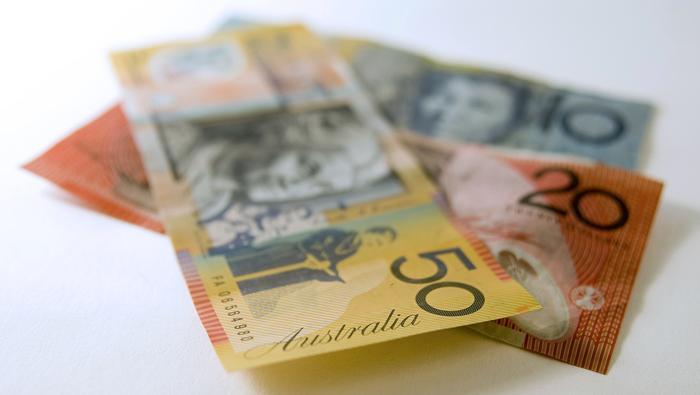2024-04-25 15:00
Crude Oil Prices and Analysis Crude Oil prices are edging cautiously back up Demand worries are balanced out by potential supply threats US inflation numbers will be the next major news point, as they are for all markets Crude oil prices were up but still very close to their opening levels in a rather torpid European Thursday. The previous day saw the release of the United States’ Purchasing Managers Index report for April. It found overall business activity at a four-month low, sending oil prices back below $83/barrel, where they remain, just. The market is caught between signs that energy demand out of the United States could be faltering and continuing conflicts in Ukraine and the Middle East. Both tragic clashes have the potential to disrupt supply from key producing areas at any moment. The latest numbers from the US Energy Information Administration painted a rather mixed picture. Crude inventories fell by much more than expected, but it seems that much of this was accounted for by oil exports rather than increased domestic demand. There the outlook was murkier with gasoline stocks falling rather less than forecast. The world’s largest economy is dealing with the prospect that interest rates will have to stay higher for longer. This prospect will defer economic activity and, thereby, likely reduce energy demand. According to the Chicago Mercantile Exchange’s ‘Fedwatch’ tool, a quarter-point rate reduction is now not fully priced until September. The oil market is like all others fixed on Friday’s inflation numbers from the Personal Consumption and Expenditure series. Known to be a firm favorite at the Federal Reserve, the data will assuredly be taken as a steer on monetary policy prospects. Closer to the oil market, the US oil rig count from Baker-Hughes is also coming up on Friday. US Crude Oil Technical Analysis US Crude Oil Daily Chart Compiled Using TradingView Learn How to Trade Oil Like an Expert with Our Popular Guide The West Texas Intermediate benchmark is hovering around an admittedly rather sparsely tested downtrend line from mid-2022 which now offers support very close to the market at $82.77. In recent days the market has shown some tendency to bounce on approaches to the 50-day simple moving average, now a little further below current prices at $81.16. Below that comes key retracement support at $79.97 and the market hasn’t been below that point since mid-March. To the upside, bulls have their work cut out to retrace the sharp fall seen on April 17. The top of that decline now offers resistance at $85.33. Given current, modest daily ranges, it is hard to see a test of that in the near term. Psychological resistance at $84.00 is closer to hand and the bulls will probably try to consolidate above that point before attempting to push on. IG’s own sentiment indicator finds traders quite bullish at current levels, and the market remains well within a longer-term broad uptrend from the lows of December, which looks most unlikely to be challenged anytime soon. --By David Cottle for DailyFX https://www.dailyfx.com/news/crude-oil-prices-retrace-some-losses-despite-us-demand-doubts-20240425.html

2024-04-25 13:04
US Q1 GDP, US Dollar Analysis and Charts US Q1 Q/Q GDP misses expectations. Personal Consumption Price Index (PCE) beats estimates. US dollar slips then picks up. US growth remains positive but the advanced look at Q1 GDP showed output slowing. The Q/Q headline figure of 1.6% missed market forecasts of 2.5% and was less than half the 3.4% seen in Q4 2023. The second estimate of US Q1 GDP will be released on May 30th. While the lower-than-expected GDP figure would bring rate cuts back to the fore, the price index for gross domestic production rose sharply compared to the prior quarter. According to the US Bureau of Economic Analysis, ‘Theprice index for gross domestic purchasesincreased 3.1 percent in the first quarter, compared with an increase of 1.9 percent in the fourth quarter (table 4). Thepersonal consumption expenditures (PCE) price indexincreased 3.4 percent, compared with an increase of 1.8 percent. Excluding food and energy prices, the PCE price index increased 3.7 percent, compared with an increase of 2.0 percent.’ The US dollar fell on the GDP figure but turned around straight away as traders factored in the PCE increases. Today’s release is unlikely to see US rate cuts bought forward with the market now fully priced for a 25 bp cut in November. The US dollar is back above 1.0600 and eyes the recent multi-month high at 106.50. US Dollar Index Daily Chart Chart by TradingView What are your views on the US Dollar – bullish or bearish?? You can let us know via the form at the end of this piece or you can contact the author via Twitter @nickcawley1. https://www.dailyfx.com/news/us-q1-gdp-misses-forecasts-pce-beats-estimates-us-dollar-moves-higher-20240425.html

2024-04-25 11:30
Yield Curve Inversion and its Economic Implications Yield curve inversion occurs when short-term debt instruments have higher yields than long-term instruments of the same credit quality. In the United States, this typically refers to the relationship between the yields of US Treasury bonds with different maturities. When the yield curve inverts, it shows that investors are willing to accept lower returns (yield) on long-term bonds compared to short-term bonds, signaling a lack of confidence in the long-term economic outlook. Historically, yield curve inversions have been reliable predictors of economic recessions in the United States. When the yield curve inverts, it suggests that investors anticipate a slowdown in economic growth and a potential decline in interest rates in the future. This is because investors tend to flock to the safety of long-term Treasury bonds during times of economic uncertainty, driving up their prices and pushing down their yields. Yields and prices are inversely related. US Yield Curve – April 25, 2024 The most closely watched spread is between the 2-year and 10-year Treasury yields. When the 2-year yield rises above the 10-year yield, it is considered a significant warning sign for the economy. In the past, yield curve inversions have preceded recessions by an average of 18 to 24 months, although the timing can vary. Learn How to Trade like a Professional with our Complimentary Guide An inverted yield curve can have several implications for the US economy: Reduced lending: Banks typically borrow short-term funds and lend them out for longer terms. When short-term rates are higher than long-term rates, banks may find it less profitable to lend, leading to a decrease in credit availability. Decreased investment: Businesses may become more cautious about investing in new projects or expanding their operations when faced with the prospect of an economic slowdown, leading to a decline in overall investment. Lower consumer spending: If businesses cut back on investment and hiring, it can lead to slower job growth and wage stagnation. This, in turn, may cause consumers to reduce their spending, further dampening economic activity. Monetary policy challenges: An inverted yield curve can make it more difficult for the Federal Reserve to stimulate the economy through traditional monetary policy tools, such as lowering interest rates, as rates are already low across the board. It is important to note that while yield curve inversions have been reliable recession indicators in the past, they do not guarantee that a recession will occur. Other economic factors, such as inflation, employment, and global trade, also play significant roles in shaping the economy's trajectory. Nevertheless, policymakers, businesses, and investors closely monitor the yield curve for signs of potential trouble on the horizon. https://www.dailyfx.com/news/yield-curve-inversion-and-its-economic-implications-20240425.html

2024-04-25 08:10
Japanese Yen (USD/JPY) Analysis The yen breaks into the danger zone ahead of the BoJ meeting USD/JPY breaches line in the sand BoJ Governor Ueda still sees trend inflation below target, will the updated forecast bring the inflation objective closer? Elevate your trading skills and gain a competitive edge. Get your hands on the Japanese yen Q2 outlook today for exclusive insights into key market catalysts that should be on every trader's radar: The Yen Breaks above the Danger Zone Ahead of the BoJ Meeting Yesterday, USD/JPY rose above the 155.00 marker, a level identified by former Deputy Finance Minister Michio Watanabe as a level that is likely to prompt a response from Japanese authorities. Early on Thursday the pair continues north of 155.00, ahead of two potential dollar catalysts, US GDP (today) and PCE data (tomorrow). If US growth beats estimates and PCE reveals further setbacks to the disinflationary process, USD/JPY may accelerate even higher. The Atlanta Fed currently forecasts Q1 GDP at 2.7% while economists foresee growth of 2.5% for the first quarter. The Bank of Japan (BoJ) will look to avoid a repeat of the dovish messaging issued in the run up to the 2022 FX intervention efforts that sent the yen reeling. In recent weeks, current BoJ Governor Kazuo Ueda has alluded to the potential of raising interest rates if underlying inflation continues to go up, but on Tuesday, he stressed that trend inflation remains somewhat below 2% which will turn the focus to the medium-term inflation projection which will accompany the BoJ statement as the two-day central bank meeting draws to a close tomorrow. The yen has weakened across a number of major currencies in the last few days, adding pressure on Japanese authorities to respond to the consistent depreciations of the local currency. Japanese exports thrive on a weaker yen but at a certain point input costs like fuel become a drag on the economy, something Japan is looking to avoid – particularly at a time when oil prices are heading higher. Japanese Yen Index (Equal-Weighted Approach) Source: TradingView, prepared by Richard Snow USD/JPY Breaches ‘Line in the Sand’ USD/JPY at 155.00 has been in the works now for weeks and now that it has been breached - even before high impact US data has been released – currency markets appear unfazed. The upper side of the longer-term, ascending channel becomes the next level of resistance ahead of the 160.00 marker. With the BoJ likely to keep rates unchanged, the only other obvious tools at Kazuo Ueda’s disposal is to taper asset purchases (or signal lower bond purchases) or to present a strong hawkish stance in his assessment of the overall situation. Either way, in the absence of action from the BoJ or finance officials, momentum appears to be heading higher for USD/JPY. To the downside, things can move very quickly should action be taken by the ministry of finance. Prior intervention witnessed moves around 500 pips lower in USD/JPY as a reminder of how volatile the pair may become. USD/JPY Weekly Chart Source: TradingView, prepared by Richard Snow Learn the ins and outs of trading USD/JPY - a pair crucial to international trade and a well-known facilitator of the carry trade Major Risk Events Ahead https://www.dailyfx.com/news/usd-jpy-breaches-line-in-the-sand-ahead-of-boj-meeting-20240425.html

2024-04-24 18:30
EUR/USD and EUR/GBP Technical Analysis and Sentiment, and Prices EUR/USD – The recent rally looks tired. EUR/GBP – Volatility on both sides. The Euro has pushed higher against both the US dollar and the British Pound over the last few sessions despite the market fully expecting the European Central Bank to cut interest rates at the June ECB policy meeting. The US dollar weakness may be short-lived as this week’s US Q1 GDP and Core PCE may still reinforce the longer-term market view that US rates are going to stay higher for longer. The daily EUR/USD chart shows the pair trading on either side of 1.0700 after rebounding from 1.0600 last week. The April 16th multi-month low coincided with a heavily oversold CCI reading which is now being erased. All three simple moving averages are above the spot price and in a negative pattern, while the pair has posted two major lower highs and lower lows since the end of last year. The next level of resistance is seen at 1.0787, while a confirmed break of 1.0600 will bring 1.0561 and 1.0448 into play. EUR/USD Daily Price Chart EUR/USD Sentiment Analysis: Traders Build Net-Shorts, Prices May Still Fall Retail trader datashows 59.30% of traders are net-long with the ratio of traders long to short at 1.46 to 1.The number of traders net-long is 3.54% lower than yesterday and 16.77% lower than last week, while the number of traders net-short is 20.90% higher than yesterday and 35.35% higher than last week. We typically take a contrarian view to crowd sentiment, and the fact traders are net-long suggests EUR/USD prices may continue to fall. Yet traders are less net-long than yesterday and compared with last week. Recent changes in sentiment warn that the current EUR/USD price trend may soon reverse higher despite the fact traders remain net-long. EUR/GBP jumped last week after BoE commentary that UK inflation is falling towards target. Bank of England rate cut expectations were brought forward, weakening Sterling against a range of currencies. EUR/GBP hit a multi-month high but partially retraced the move yesterday after the CCI indicator flashed a heavily overbought reading. In the short term, the recent double high around 0.8645 should act as resistance if the 200-day simple moving average is broken. The 0.8550 is currently guarded by both the 20- and 50-day smas. EUR/GBP Daily Price Chart EUR/GBP Sentiment Analysis: Traders Cut Net-Shorts on the Week, Prices May Fall According to the latest retail trader data, 51.62% of traders are net-long on EUR/GBP, with a long-to-short ratio of 1.07 to 1. The number of net-long traders has increased by 22.75% compared to yesterday but decreased by 26.67% from last week. Conversely, the number of net-short traders has decreased by 15.19% since yesterday but increased by 61.45% from last week. The contrarian view to crowd sentiment suggests that EUR/GBP prices may continue to fall, despite the current mixed trading bias. What is your view on the EURO – bullish or bearish?? You can let us know via the form at the end of this piece or you can contact the author via Twitter @nickcawley1. https://www.dailyfx.com/news/euro-outlook-eur-usd-and-eur-gbp-technical-analysis-and-sentiment-latest-20240424.html

2024-04-24 15:20
Australian Dollar (AUD/USD, AUD/NZD) Analysis Australian inflation eases less than anticipated in March and Q1 as a whole AUD/USD continues to benefit from the return to risk assets AUD/NZD bullish continuation shows promise Elevate your trading skills and gain a competitive edge. Get your hands on the Australian dollar Q2 outlook today for exclusive insights into key market catalysts that should be on every trader's radar: Australian Inflation Eases Less than Anticipated in Q1 Monthly, quarterly and yearly inflation measures showed disappointing progress towards the Reserve Bank of Australia’s (RBA) target. The monthly CPI indicator for May rose to 3.5% versus the prior 3.4% to round off a disappointing quarter where the first three months of the year revealed a rise of 1%, trumping the 0.8% estimate and prior marker of 0.6%. Generally higher service cost pressures in the first quarter have made a notable contribution to the stubborn inflation data – something the RBA will most likely continue to warn against. The local interest rate is expected to remain higher for longer in part due to the sluggish inflation data but also due to the labour market remaining tight. A strong labour market facilitates spending and consumption, preventing prices from declining at a desired pace. Markets now foresee no movement on the rate front this year with implied basis point moves all in positive territory for the remainder of the year. This is of course likely to evolve as data comes in but for now, the chances of a rate cut this year appear unlikely. Implied Basis Point Changes in 2024 For Each Remaining RBA Meeting Source: Refinitiv, prepared by Richard Snow AUD/USD Continues to Benefit from the Return to Risk Assets After escalation threats between Israel and Iran appeared to die down, markets returned to assets like the S&P 500 and the ‘high beta’ Aussie dollar. AUD/USD subsequently reversed after tagging the 0.6365 level – the September 2022 spike low and surpassed 0.6460 with ease. Upside momentum appears to have found intra-day resistance at a noteworthy area of confluence resistance – the intersection of the 50 and 200-day simple moving averages (SMAs). The move could also be inspired by reports of Israel preparing to move on Hamas targets in Rafah, which could risks deflating the recent lift in risk sentiment. US GDP data tomorrow and PCE data on Friday still provide an opportunity for increased volatility and a potential USD comeback should both prints surprise to the upside, further reinforcing the higher for longer narrative that has reemerged. All things considered, AUD may be susceptible to a sifter end to the week. AUD/USD Daily Chart Source: TradingView, prepared by Richard Snow Learn why the Australian dollar typically trends alongside risk assets like the S&P 500 and is considered a riskier currency: AUD/NZD Bullish Continuation Shows Promise AUD/NZD entered into a period of consolidation as prices eased in the form of a bull flag pattern. After yesterday’s close, a bullish continuation appears on the cards for the pair despite today’s intraday pullback from the daily high. A move below 1.0885 suggests a failure of the bullish continuation but as long as prices hold above this marker, the longer-term bullish bias and the prospect of a bullish continuation remains constructive. One thing to keep in mind is the risk of a shorter-term pullback as the RSI approaches overbought once more. Upside target appears at 1.1052 (June 2023 high) and 1.0885 to the downside. AUD/NZD Daily Chart Source: TradingView, prepared by Richard Snow https://www.dailyfx.com/news/aud-rises-as-aussie-inflation-exceeds-expectations-erasing-rate-cut-hopes-20240424.html
